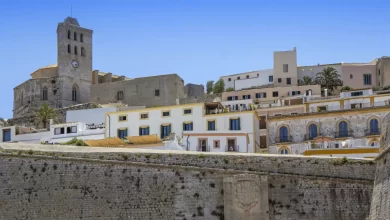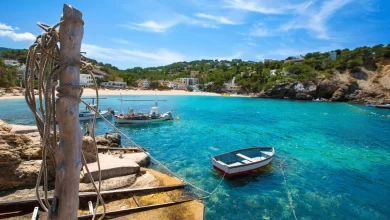Perched atop Dealul Spirii in Bucharest, the Palace of the Parliament is a testament to ambition and architectural prowess. Commonly known as the People’s House, this colossal structure serves as the seat of the Romanian Parliament. Let’s delve into the history, design, and significance of this iconic building, exploring its intricacies and impact on the cityscape and nation.
Building the Behemoth
Designed by chief architect Anca Petrescu and a team of 700, the Palace is a marvel of modernist Neoclassical architecture with socialist realism. Ordered by Nicolae Ceaușescu, its construction spanned 13 years (1984–1997). The building’s sheer size is awe-inspiring, reaching a height of 84 meters and boasting a floor area of 365,000 square meters, making it the second-largest administrative building globally. However, it also holds the title of one of the heaviest, weighing a staggering 4.1 million tonnes.
A Palace for the People
Renowned for its ornate interior, the Palace houses the two chambers of the Romanian Parliament, along with three museums. Despite being originally named the House of the Republic, it became The People’s House after the Romanian Revolution in 1989. Today, it hosts state events, conferences, and symposia, although about 70% of its immense space remains unused.
A Symbol of Excess
Valued at €4 billion, the Palace is the most expensive administrative building globally as of 2020. However, its costs extend beyond construction; the annual expenses for heating, electricity, and lighting exceed $6 million. The grandeur of the palace is a testament to both Ceaușescu’s vision and the economic burden it placed on the Romanian people.
Systematization and Construction Challenges
Ceaușescu’s vision for the Palace was an extreme expression of the systematization program, a grand urban plan inspired by North Korea’s Juche ideology. The construction involved the demolition of the Uranus-Izvor neighborhood and 37 factories, displacing 40,000 people. The works, carried out with forced labor, resulted in controversy over the number of casualties, with estimates ranging from 20,000 to 100,000.
Aftermath and Adaptive Use
Since 1994, the Palace has housed the Romanian Parliament. Attempts to repurpose the building, including transforming it into a shopping center, have been met with skepticism. The Palace, sinking 6 mm annually due to its weight, remains a captivating yet controversial symbol in Romania.
FAQs About the Palace of the Parliament
A1: Construction spanned 13 years, from 1984 to 1997.
A2: Originally named the House of the Republic, it earned the name The People’s House after the Romanian Revolution in 1989.
A3: The expenses for heating, electricity, and lighting exceed $6 million per year.
A4: The Palace weighs a staggering 4.1 million tonnes.
A5: Since 1994, it has housed the Romanian Parliament and hosts various events, although a significant portion remains unused.
The Palace of the Parliament, with its tumultuous history and impressive stature, stands as an enduring symbol of Romania’s past. Its architectural grandeur and the controversies surrounding its construction paint a complex picture of a nation in transition. As debates continue about its utility and future, the People’s House remains a monumental presence, shaping both the skyline of Bucharest and the collective memory of its people.





